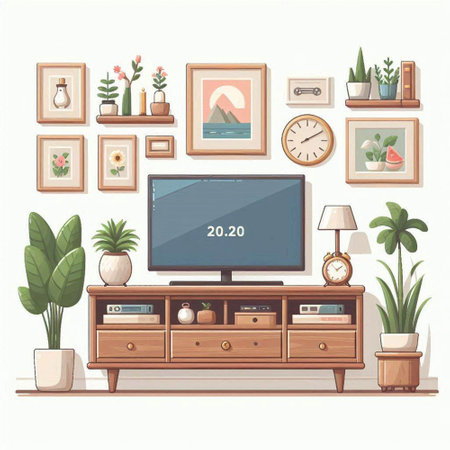Introduction to Multi-Function Furniture
In recent years, multi-function furniture has experienced a remarkable surge in popularity across modern British homes. Whether you are living in a compact London flat or enjoying the generous space of a countryside house, these versatile pieces have swiftly become more than just a passing trend—they are now considered essentials for contemporary living. As urban spaces become increasingly precious and homeowners seek clever ways to maximise every square foot, the appeal of furniture that serves more than one purpose is clear. Not only do these innovative designs help save space, but they also offer practical solutions for busy lifestyles and changing needs, making them an ideal choice for British interiors of all sizes.
Choosing the Right Multi-Function Pieces
Selecting the perfect multi-function furniture is essential for blending practicality with style in your living space. In the UK, homes range from compact city flats to generous countryside cottages, so it’s important to consider both room size and individual lifestyle when choosing pieces. Below is a quick reference table to help guide your selection:
| Room Size | Recommended Piece | Key British Trends |
|---|---|---|
| Small (City Flat) | Ottoman Beds, Nesting Tables | Reclaimed Wood, Tweed Upholstery |
| Medium (Terraced House) | Sofa Beds, Extendable Dining Tables | Heritage Checks, Velvet Accents |
| Large (Detached Home) | Storage Benches, Modular Sofas | Handcrafted Details, Wool Mix Fabrics |
When selecting multi-functional furniture, prioritise quality materials and robust construction to ensure longevity—a nod to traditional British craftsmanship. Opt for reclaimed wood for a sustainable yet characterful touch that’s on trend in many UK homes. Heritage fabrics such as Harris Tweed or tartan also bring a sense of timelessness while standing up well to daily wear.
Consider your everyday needs: if you often host guests, a classic Chesterfield sofa bed offers both elegance and utility; for busy families, a dining table with hidden storage keeps clutter at bay. Ultimately, select pieces that not only save space but also enhance the overall decor by reflecting your personal style and embracing British design influences.

3. Harmonising Styles and Materials
When incorporating multi-function furniture into your home, achieving a harmonious look is all about blending various styles and materials thoughtfully. British homes often celebrate a rich tapestry of influences—think a classic Chesterfield sofa paired with sleek, contemporary shelving or industrial-inspired tables set against period cornices. The key is to identify common threads, such as colour palettes or material finishes, that can tie these pieces together.
Start by selecting one dominant style as your foundation—perhaps the timeless elegance of Victorian detailing or the understated charm of Scandi minimalism. From there, introduce multi-functional pieces that echo this aesthetic in subtle ways. For example, a modern storage ottoman upholstered in heritage tweed can nod to tradition while offering practical utility. Equally, glass-topped coffee tables with brushed brass frames will link modern and vintage elements effortlessly.
Don’t shy away from mixing wood tones or metal finishes; instead, aim for balance. Pair warm oak shelves with cool chrome accents, ensuring at least one repeated element across the room to prevent visual chaos. Accessories such as cushions, throws, or decorative trays can bridge gaps between disparate styles, creating cohesion without sacrificing character.
The British approach to interiors values both individuality and comfort, so let your choices reflect personal taste whilst maintaining a considered scheme. By intentionally layering textures and finishes—from plush velvets to crisp linens—you’ll allow each multifunctional piece to integrate seamlessly into the broader design narrative of your home.
4. Maximising Space in British Homes
One of the most notable challenges faced by many UK homeowners is making the most out of limited space, especially in period properties and modern city flats where every square foot counts. Integrating multi-function furniture becomes not only a style choice but a practical necessity. Start by identifying key living zones and how each piece can serve dual purposes without disrupting the room’s natural flow. Consider furniture that folds away, expands, or offers hidden storage to keep clutter at bay and maintain an open feel.
Layout Strategies for Seamless Integration
When planning your layout, focus on traffic flow and accessibility. Avoid blocking windows or doors with bulky items, and place modular furniture against walls to free up central spaces for movement. Select slim-profile pieces in neutral tones to reflect light and create the illusion of more space.
Common Multi-Function Furniture Solutions
| Furniture Type | Main Function | Secondary Use |
|---|---|---|
| Sofa Bed | Sofa for sitting | Guest bed for overnight stays |
| Storage Ottoman | Coffee table or seat | Hidden storage compartment |
| Extendable Dining Table | Everyday dining | Expanded seating for guests |
| Wall-Mounted Desk | Home office space | Folds away to free up area |
Tips for Functional Flow in Smaller Spaces
- Opt for pieces on castors to allow easy reconfiguration when needed.
- Select furniture with built-in cable management to reduce visible wires.
- Avoid overfilling rooms; negative space enhances both comfort and visual appeal.
By choosing versatile furniture and employing strategic layouts, you can transform even the cosiest British home into a flexible, stylish living environment that caters to daily needs while reflecting your personal taste.
5. Accessorising for Cohesion
When integrating multi-function furniture into your living space, the right accessories can make all the difference in achieving a harmonious British-inspired interior. Accents such as cushions, throws, and artwork are quintessential elements in many UK homes, offering both comfort and visual unity. Choose cushions in classic fabrics like tartan, velvet, or linen, coordinating their colours with your overall palette to tie together disparate pieces of furniture. Throws draped over a sofa bed or storage bench not only add warmth but also soften the transition between practical features and decorative flair.
Artwork is another powerful tool for cohesion. Opt for prints or paintings that reflect British landscapes or abstract patterns in complementary hues. Position these above or near your multi-function furniture to anchor them within the room’s design scheme. For added depth, layer smaller framed photos or vintage-inspired illustrations on shelves or side tables associated with your flexible pieces.
Don’t overlook traditional British touches—think ceramic vases filled with fresh blooms, or a stack of well-thumbed books on a coffee table with hidden storage. Such accessories bring personality and a lived-in feel, ensuring that even the most functional items blend seamlessly into an inviting and unified decor.
6. Maintenance and Practicality
Ensuring your multi-function furniture remains stylish and functional for years to come is all about regular care and practical upkeep. Start with a consistent cleaning routine: for upholstered pieces, vacuum crevices weekly to prevent dust build-up, and spot clean any spills immediately using fabric-appropriate cleaners. For wooden or metal surfaces, use a damp cloth followed by a dry wipe to avoid watermarks, and periodically apply the right polish or protective spray as suited to the material.
Minor repairs can make all the difference in preserving your furniture’s integrity. Tighten screws, hinges, and bolts every few months—especially on items that fold, extend, or have moving parts. If you notice a small tear in fabric or a chip in wood, address it straight away with repair kits available from most UK DIY stores; this not only prevents further damage but keeps your furniture looking sharp.
Seasonal care is particularly important given Britain’s fluctuating temperatures and humidity levels. In winter, keep wooden pieces away from direct heat sources like radiators to prevent warping or cracking. In summer, avoid prolonged exposure to sunlight which may fade fabrics and finishes. Rotating cushions and adjusting configurations occasionally can also help distribute wear evenly.
Ultimately, investing a little time into maintenance ensures that your multi-function furniture continues to blend seamlessly into your décor, offering both style and practicality without compromise.
7. Conclusion: Achieving Effortless Harmony
Blending multi-function furniture into your home is more than a practical solution—it’s an opportunity to create spaces that exude both British charm and modern sensibility. Throughout this guide, weve explored the art of choosing versatile pieces, considering scale and style, and maintaining visual flow with colour and material. Remember, the key is to thoughtfully select items that serve multiple purposes without compromising on aesthetic appeal or daily comfort. Take inspiration from classic British interiors—where functionality meets understated elegance—and embrace clever storage ottomans, extendable dining tables, or sofa beds in tasteful fabrics that complement your existing décor. By focusing on quality craftsmanship, subtle details, and harmonious arrangements, you can achieve a living space that feels welcoming and effortlessly organised. Let these tips inspire you to curate a home where beauty and utility go hand in hand—reflecting the best of British style while making everyday life smoother and more enjoyable.


